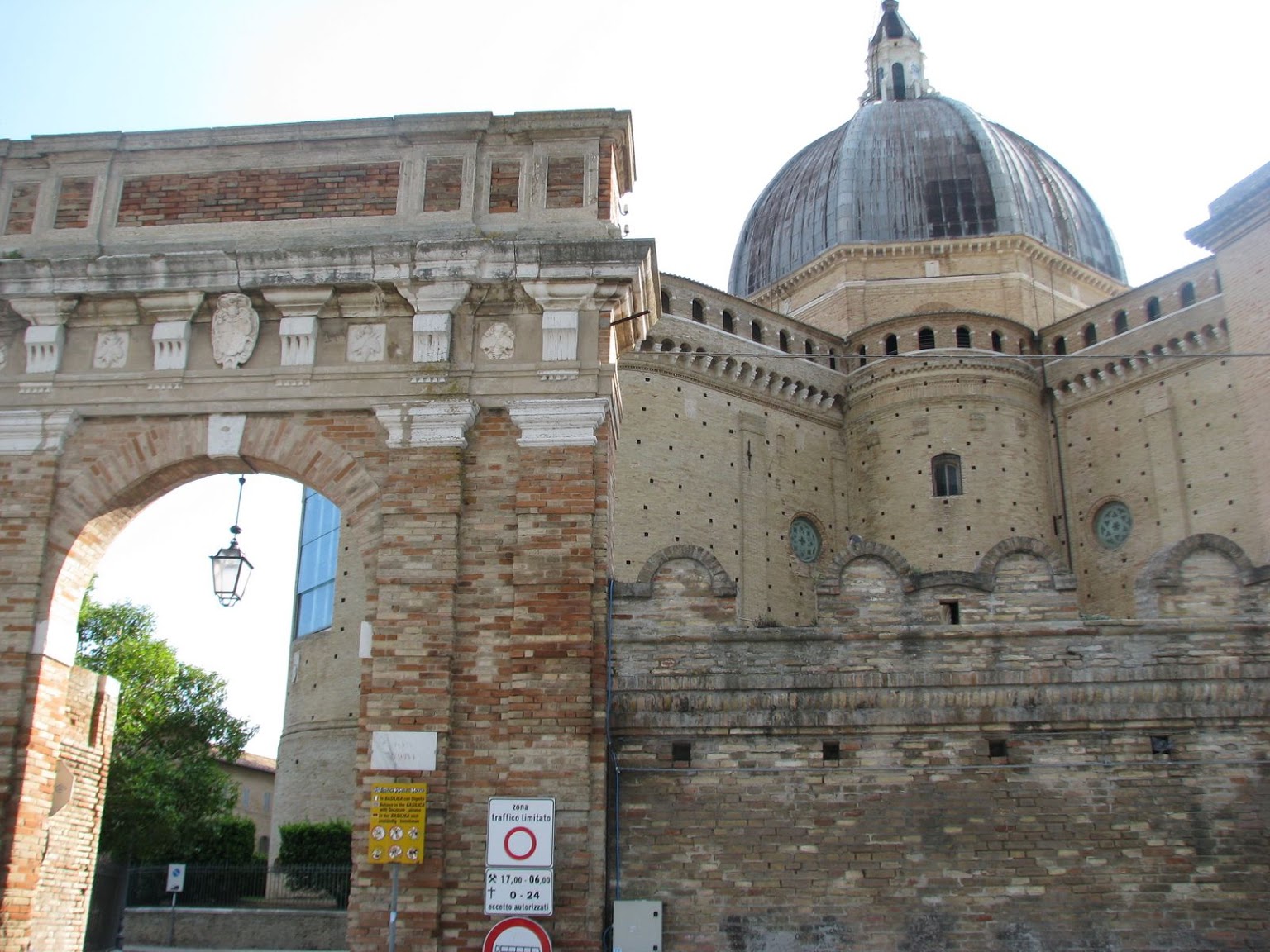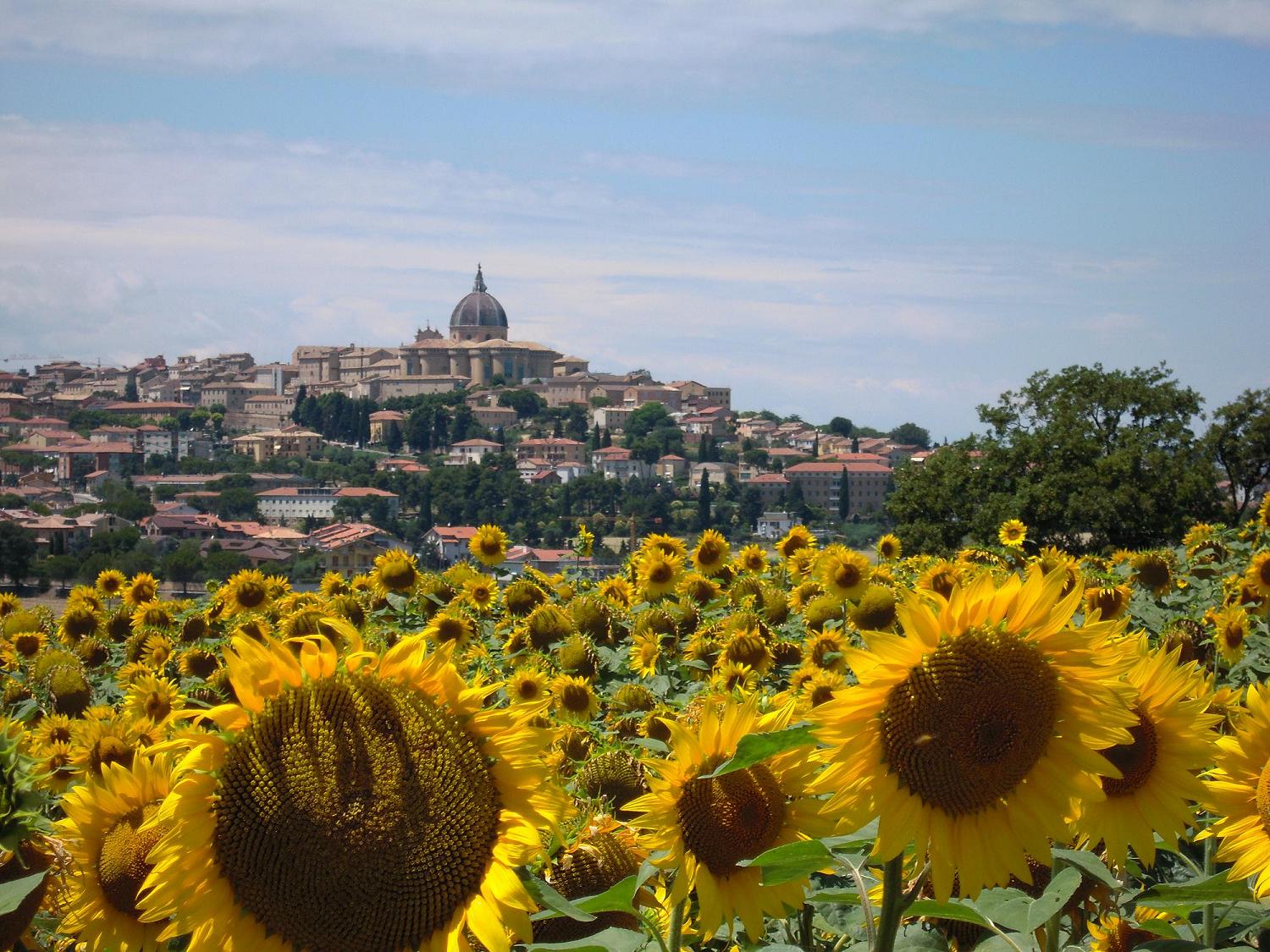Loreto
The city developed around the famous Basilica which houses the famous relic of the Holy House of Nazareth where, according to tradition, the Virgin Mary was born and lived and where he received the announcement of the miraculous birth of Jesus. Since the early centuries of the Christian tradition affirmed that in Nazareth he was the little house of the Virgin, where she was born, where took place the announcement of the Archangel Gabriel and where he lived with Jesus and Joseph in the Holy Family. After the resurrection, the apostles would meet in this house and they celebrated the Eucharist as Jesus taught. In early May 1291, Nazareth and all of Palestine were the domain of the Seljuk Turks. According to tradition, the Holy House some angels withdrew and took her to flight. On 10 May 1291 the angels left the house on Trsat, near the city of Rijeka; They were lumberjacks, amazed, to find the little house. There, however, the pilgrims were often prey to thieves and criminals; so, three years and seven months later, the angels took up the Santa Casa and it flew up. They crossed the Adriatic and just arrived in the Marches placed her near Ancona, in the place where now stands the church of Santa Maria Liberator of Posatora, whose name tradition derives precisely from this event: laying-et-hours (stopped and pray). The Holy House stood in that place nine months; then the angels lifted her again and rested near Porto Recanati in the locality Vane. This time were the shepherds to see a bright light and out of the clouds, behind the light, the house. The site, however, was too close to the sea and therefore exposed to the dangers of the Turkish incursions; Furthermore there also began to flock to the criminals rob the faithful who came on pilgrimage. Eight months later the house was again moved by angels, this time on Mount Prodo (where later arose the town of Loreto), on land owned by Count Stefano and Simone Rinaldi of Antici, two brothers soon began to benefit the pilgrimages of the faithful to the point of making a petition to the pope to become its owners. Again the angels rose up in flight the Holy House and rested at the end of 1296, in the middle of the road that goes from Recanati to its port, and then in a public place, no one could argue for and exploit. The site chosen was on top of a hill covered with laurels. From the Latin laurus Lauretum the place was called, and then Loreto. The journey of the house of Nazareth to Loreto is called "translation of the Holy House" and that name is represented in the works of the artists of past centuries. In the Marche is living the tradition of lighting bonfires (the focaracci) on the night between 9 and 10 December to "illuminate the road to the Holy House"; it fires the feast of the coming, meaning "coming" the arrival of the Holy House. In 1617, thanks to the initiative of the Capuchin friar anconitano between 'Thomas, the custom spread throughout all brands. For this reason the Catholic calendar the feast of Our Lady of Loreto falls on December 10, the day when we celebrate also the day of the Marches. The September 12, 1920 took place in Loreto the party for the proclamation of Our Lady of Loreto as "Patron of aeronauts", decreed by apostolic brief by Pope Benedict XV on March 24 of that year.




